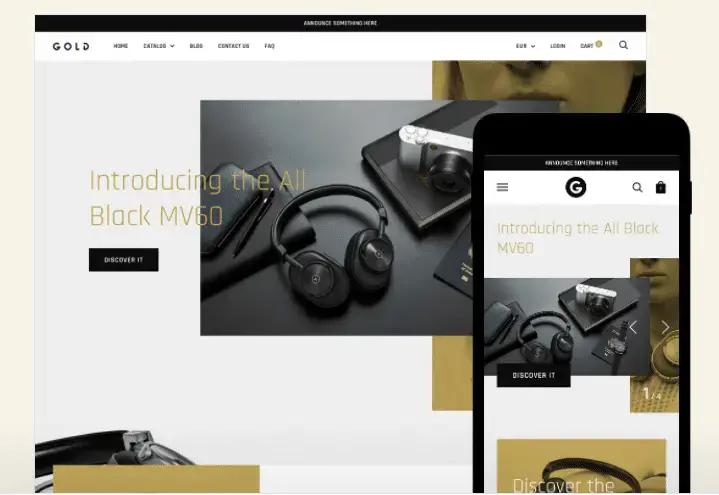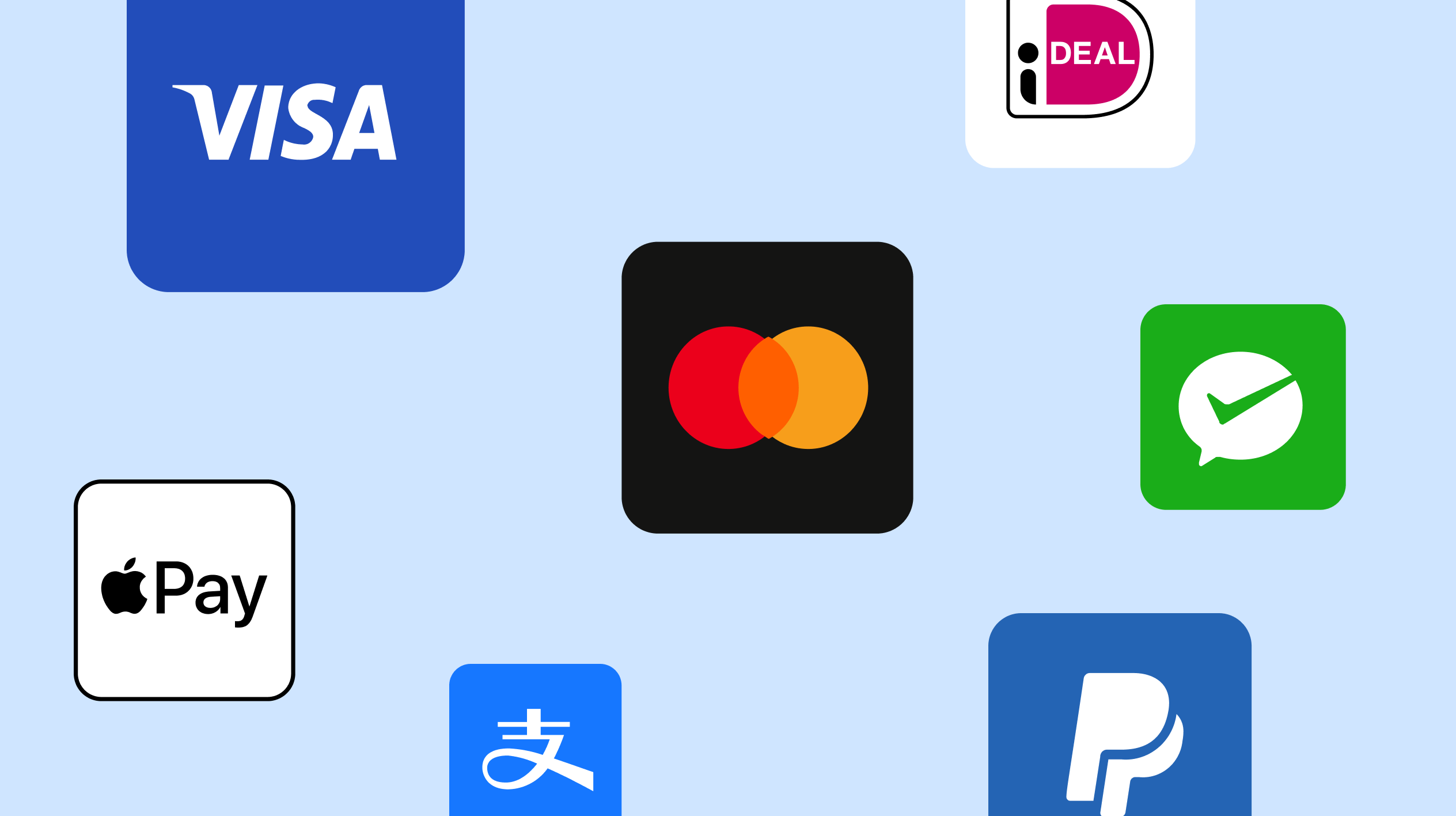E-commerce is one of the most sustainable methods to generate money online. According to Statista. In 2019, retail e-commerce sales globally totaled to Some people look for information on how to establish an e-commerce firm. This is because they want to understand exactly how to do things step by step, especially as beginners, in order to avoid making mistakes. Another reason is that they want to participate in a thriving business that is predicted to generate $6.54 trillion in revenue by 2022.
Are you one of these individuals? I welcome you to this comprehensive tutorial, which will show you step by step how to establish and flourish with an e-commerce business.

The following steps are what this guide will discuss in detail:
- Research And Come Up With An E-commerce Business Plan
- Identify An E-commerce Niche
- Register Your E-commerce Business Name
- Choose An E-commerce Platform
- Create, Design, And Launch Your Online Store
- Market Your Store To Drive Traffic, Get Orders And Make Sales
But before we head to the main point, let’s look at what an e-commerce business is.
What is an E-commerce Business?
E-commerce is simply the act of buying and selling on the internet. It might also be seen as an online business that includes the exchange of data and the transmission of funds in order for a transaction to be completed.
It comprises the sale of physical and digital items, internet banking, online tickets, online auctions, payment gateways, and so on.
Step-by-Step Guide to Starting an E-commerce Business.
It’s critical that you understand the stages involved in launching an e-commerce firm. This will keep you up to date on what you need to do and how to accomplish it, allowing you to get your e-commerce business up and operating quickly.
1.Research And Come Up With An E-commerce Business Plan
Starting an E-commerce business is just like starting every other business. You have to carry out the necessary research as it concerns E-commerce.
The aim is to come up with a business plan which will serve as your blueprint. The idea is to make findings on the E-commerce business you are interested in.
This could be contacting people who are already in the business so as to know exactly what the business entails.
Which kind of product or service will you be selling? If it is a product, will it be digital or physical products? Is it physical? how will you source it? If it is digital, how will you develop it or partner with some who has already developed it?
Going further, you have to consider how much it will cost you to start an e-commerce business. Do you have the capital? If no, how will you source it? Every business has a legal angle. It’s necessary to consider all the legal processes or regulations that may involve it.
The scalability of your E-commerce business should be part of your research. Every business hopes to expand.
How do you plan to scale it? Will you involve partners and investors? If that happens how do you plan to structure it to ensure that your investors and business partners get their return on investment?
All these are what you need to work on and put down in a business plan. That will guide you in working towards achieving the goals you’ve set for yourself.
2. Identify An E-commerce Niche
Although learning how to start an e-commerce business is a great move considering that the industry is booming, it is also competitive.
That’s why you need to pay so much attention to the niche you want to go into.
Below are some of the niches in E-commerce
- Vehicle Accessories
- Smartphone Accessories
- Weight loss products
- Green /Eco-friendly Products
- Sportswear and Equipment
- Computer Accessories
- Kids Clothing And Toys
- Health And Fitness Products
- Fashion Line
- Lifestyle Products
What you should bear in mind is that some of these niches are more competitive than others. The competitiveness here means that a lot of merchants are into these niches because they look more profitable.
That’s not to say one can’t go into them. According to Alidrop, these are the 10 most profitable E-commerce niches with low competition. As a beginner who isn’t sure of how to choose a profitable E-commerce niche, below is how to go about it.
How To Choose An E-commerce Niche
What Do You Have Passion For?
This is the first thing that comes to mind when thinking of which E-commerce niche to choose. It is natural for you to go extra mile for something you have a passion for. So is true of the e-commerce niche.
Sit back and figure out that which you also talk about passionately or advise people on. Narrow it down to the solutions you offer to people and think of products that will help solve such problems.
Take, for instance, you are passionate about women looking beautiful and attractive. Why not consider products in the beauty niche?
Can You Make Profit From It?
It takes more than passion to make it in an e-commerce niche. The ability to make a profit from it matters more.
Some niches may not be profitable because of product types, demand, and the consumer behavior of the target customers. Google Trend is a free tool from Google that you can use to identify the number of people who search for topics and products in your niche over a period of time.
You can also get suggestions for related searches as it relates to a particular niche. This will help you with keyword optimization when you write your product description.
Another thing is to identify top products in that niche, the demand, the competitive price, and the shipping cost.
All these are the calculations you need to do on your own in order to see if it is possible for you to get large-volume sales.
Where Will You Source Your Products From?
Credible suppliers who will supply products to you at a reasonable price should be part of the things to consider.
If products in your niche are expensive for your customers to acquire as a result of the rate you bought from suppliers, you may not make a profit. The demand will be low making it difficult for you to have a high turnover.
If you plan to launch your E-commerce business on Shopify, you can make use of Oberlo, one of the best apps used by merchants to source for suppliers of different products. Alternatively, you can join communities or forums where you meet fellow merchants to seek advice.
3. Come Up With Suitable Name
You’re already making progress after you have identified the E-commerce niche. Coming up with a suitable name for your e-commerce business is next. This is what customers should know your e-commerce for.
Here you have to be sure you have a name that suits your niche and that your customers can easily relate with.
Since it is e-commerce and surely you need a domain name, bear in mind that any name you come up with will likely be your domain name. Coming up with a suitable e-commerce name can be a hurdle. Here is how to go about it
Steps To Coming Up With A Suitable Name For Your E-commerce Business
Blending Of Words
This involves bringing two words that are related to your niche together to form a name. For instance, I have settled for childrens’ toy niche, next is to conduct a search on words related to it. Kids and Play are related to it.
Kid(s) is related to children and Play is what toys are used for. So having an e-commerce name – KidsPlay is good in this case.
An example of this method is Microsoft which is a giant in the tech industry. The word micro came from Microcomputer, while soft came from Software.
Using Prefix and Suffix
Adding a few letters at the beginning or ending of popular keywords in your niche is another way to go.
A few of the popular brands you know today came through that way. Shopify which is one of the popular e-commerce platforms got its name through this process by just adding ‘ify’ to Shop – a term that refers to an establishment that sells goods or services to the public.
Unrelated Names
Your e-commerce business must not come from keywords in your niche. It could be a name that is either common or uncommon which is simple to remember and easy to spell.
Alternatively, it could be an encounter you had with such a name or word which means a lot to you. An example here is Apple Inc.
The name came to be from the lovely experience Steve Jobs, the founder of the company had when he worked in an Apple Orchard near McMinnville.
Brainstorm On Them
After you have tried all these methods to arrive at names, the next is to brainstorm on them.
This is the point your thinking should be about the name and the role it will play in your E-commerce business.
How does it represent the products or services you intend to sell, your personality, business plan, and also how it will make you unique from your competitors.
List all the names you have in mind and place them side by side against the factors mentioned here.
Take A Break And Return To The Process
You need to take a break after you have brainstormed so as to have a fresh look at things. It is common in every creative process. Even content creators take a break before they edit their content.
A 24 hours break is enough to have a new look at the process again with a fresh mindset.
At the end of this step, you should be able to narrow down to a few names which came out top best after you must have taken a critical look at them.
Check If The Name You Have Chosen Is Available
At this stage, you check for the availability of such names. This is to ensure that you have not wasted your time on something that belongs to another person.
To do this, contact the relevant government agency of your country to ensure that such names have not been registered as a business name by other people.
Alternatively, you can search on Google to see that such names are not registered as a company or trademark.
Congratulations if they are all available. Another thing is to run a domain search because as an e-commerce business, it is important you secure such domain names since you surely need a website to promote your goods and services.
Conduct A Survey On The Names To Get A Feedback
This is one important step many people ignore when looking for ways to come up with that perfect e-commerce business name.
You are going to deal with the public therefore you need to test your chosen name with them before you finally settle for it.
Also, it is said that two heads are better than one. Facebook groups are the best places to conduct this kind of survey.
A Facebook group of a minimum of 50 people is okay. If possible private Facebook groups that are related to your niche.
Why? Private Facebook groups are more regulated than public Facebook groups. You can also contact the admin of such groups to help you with the survey.
If the percentage that favors the names is much higher, then know it is an ideal name for your e-commerce business. I personally made this mistake with one of my blogs.
I chose a domain name without testing it with people because I thought I have made the best choice.
However, when I wanted people to check out my blog in some of my Facebook groups, many of them who responded told me that they can’t pronounce my domain name because it was too long and difficult. In fact, one of them told me that pronouncing the name trips her off.
Register Your Business And Domain Name
This is the last thing you need to do when you settle for a name based on the best feedback you got and your discretion. It involves two stages. Stage one involves registering the name as a business with a relevant government agency in your country. Stage two is about securing a domain for that name with any domain name company like GoDaddy or Namecheap.
These steps are what you need to take urgently. Because any delay can lead to another person purchasing it, especially the domain name. Some people are even in the business of flipping domain names. They just purchase domain names and resell to you at an expensive rate.
4. Choose An E-commerce Platform
Learning how to start an e-commerce business won’t be complete if you don’t know some e-commerce platforms to choose from.
E-commerce involves buying and selling over the internet therefore you need an e-commerce platform where you can set up your online store.
It isn’t like the physical brick-and-mortar store where your customers have to walk in physically into your shop to purchase a product.
Your online store is the face of your e-commerce business. Customers will browse the internet to locate the products or services on your store before they make a choice either to purchase or not.
With that being said, choosing an e-commerce platform where you can up your e-commerce business is the most important in this step-by-step guide.
Therefore you will have to consider different e-commerce platforms out there to settle for the best.
Most of them not only allow you to create and launch your online store but also use the tools and features they offer to customize them to suit your e-commerce niche. This is without you writing a single line of code or being tech-savvy.
Other e-commerce activities this platform allows you to do are; management of inventory, get orders from customers, process orders, receive payments, and ship products to customers at their various addresses.
Although there are hundreds of e-commerce platforms that may be competing for your attention as a beginner, there are few of them which are popular, robust, and used by a lot of merchants who are already in the E-commerce business.
Best E-commerce Platforms
As a beginner it’s important you know the best e-commerce platforms and their features. How easy it is for you to set up your online store on any of them and manage it.
Shopify
It’s the most popular e-commerce platform worldwide. Shopify is a robust e-commerce platform where you can create and launch your own online store. Since over a decade it came on board, it has powers over 1,000,000 businesses worldwide.
5. Create, Design, And Launch Your Online Store
After you have settled for any of the e-commerce platforms of your choice, the next thing is to create, design, and launch your store.
The processes don’t vary much for Shopify and BigCommerce which are all in one e-commerce platform.
Your first step is to sign up for any plan of your choice. It’s advisable to start with the least plans so as to check out if the platform will work for you.
Later you can upgrade to a higher version. But for this process, I will illustrate using Shopify since it is the most popular e-commerce platform.
Select A Theme That Suits Your Niche
A theme is a template that determines the outlook of your store. Shopify has different awesome themes both free and premium which you can get on Shopify’s theme store. These themes are easy to install with just a click without having to bother about coding.

But it is important to you under the level of support available for any theme you decide to install. Why? You may like to add some features to a theme and discover that such a theme doesn’t support it.
Preview And Check The Functionality Of The Theme
Before you settle for any theme, view the demo, check for the features and reviews. This will help you make a decision based on the comments users of such themes left. Once you’re cool with it, you can upload it to your online store. This will change the appearance of your theme. Don’t panic if you don’t like the appearance of the theme in your store. You can always change it.
Customize Your Theme
After you have installed your theme, your next step is to customize it. Customizing your theme is simply making changes to the theme to suit your store.
Once you’re on the admin dashboard board, on the top left corner, you will see “ Theme” down below. Navigate through it and tap on customize.
6.Market Your E-commerce Store To Drive Traffic, Get Orders And Make Sales
Congratulations now that you have learned how to start an e-commerce business. The next thing will now be how to market it, drive traffic to it, get orders and make sales. The fact is that no customer will know about the products you’ve in your store if you don’t market it.
Marketing your store here means driving quality traffic to it for customers to check out the products you’ve there. There are two ways to go about it. Through free or paid traffic.
Free Traffic
This involves driving organic traffic through search engine optimization, social media platforms like Facebook, Instagram Twitter, etc.
For search engine optimization, it starts with using the appropriate keywords in your product title and description.
Although your Shopify is SEO optimized on default, you should try different methods to increase the organic traffic you get.
One way to go about it is by starting a blog for your store. Shopify allows you to blog for your online store.
Creating quality content that are closely related to your niche is a perfect strategy to grow your organic traffic. Another way of getting free traffic is through the use of different social media platforms.
Build a large number of followers and subscribers on your social media pages who are interested in your niche.
Consistently post contents that are helpful and frequently present to them with some of the products you have on your store through a link that will drive them to it.
This process can be demanding if you have a lot of social media accounts. It will be advisable to make use of social media management tools to automate most of your activities.
Paid Traffic
Paid traffic accounts for most of the sales some e-commerce merchants make. They achieve this through Facebook Ads, Google Ads, or Social Media Ads.
This source of traffic is quick as your products are advertised to target customers who are likely to take action.
It isn’t like free traffic which takes time and requires a more effective strategy. However, it is capital intensive and involves you spending a reasonable amount of money on ads for you to see results. To me, it is not for a beginner on a low budget.
Even though you decide to try it out, ensure that you understand how to run a campaign on Facebook, Instagram, or Google.
Otherwise, hire an expert on Fiverr to help you. This is to avoid wasting your money on campaigns that won’t generate leads and sales.
Wrapping Up
Learning how to start an e-commerce business isn’t easy especially if you don’t have the knowledge of buying and selling on the internet.
However, following the step-by-step guide that I showed you here will help you get your online store running easily. All it requires is for you to understand every stage of this guide and implement it as stated.
As someone that has an interest in buying and selling, e-commerce is the future. It’s a booming industry and has more benefits than the mortar and brick store.
With little capital and the knowledge you have acquired which has taught you how to start an e-commerce business, you can set up your store in minutes.
Another benefit is that you can operate your store 24/7 from the comfort of your room and attract buyers globally. To succeed, it is important you register your e-commerce business with the relevant government agency of your country and obtain the permit to operate legally.
Another is to file your tax as at when due. With all these being said I think the best time to move from learning how to start an e-commerce business to taking action is now.












Leave a Reply